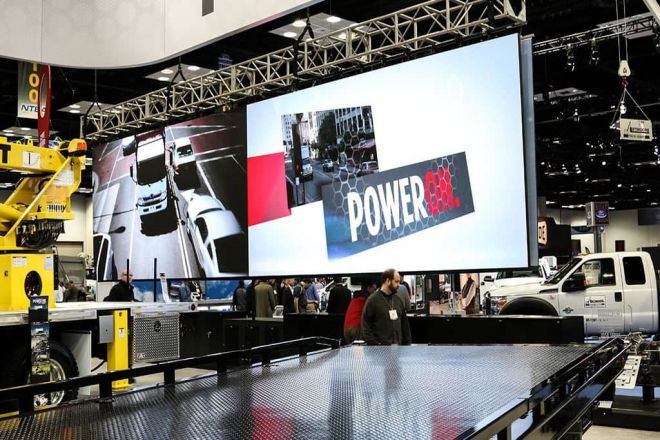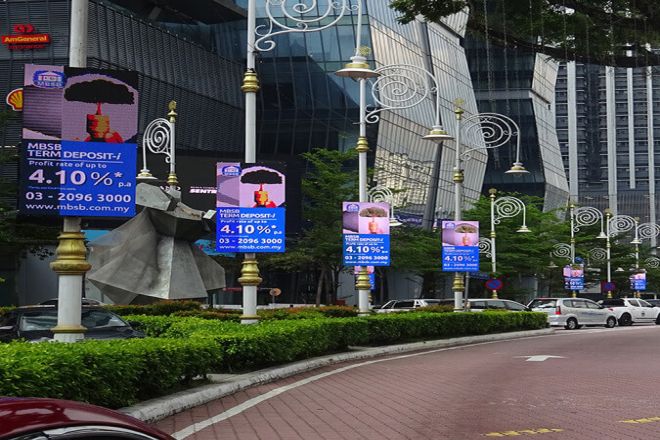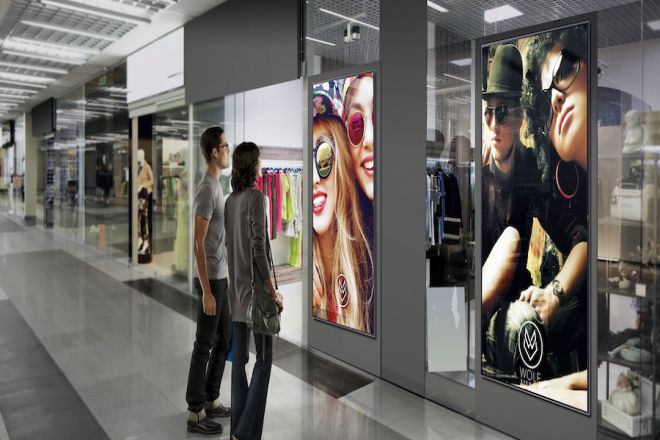Introduction

With the rapid development of science and technology, the Internet of Things (IoT) and LED display screen technology are gradually becoming an indispensable part of our lives.
The Internet of Things, with its powerful connectivity and data processing capabilities, provides unprecedented possibilities for various smart devices, while LED display screens, with their high brightness, high definition, and energy-saving and environmental protection characteristics, play an important role in advertising, publicity, transportation, and other fields.
Combining the Internet of Things with LED display screens to achieve the linkage effect of the two can not only greatly improve the efficiency of information dissemination and interactive experience but also bring new development opportunities to smart cities, commercial advertising, and other fields.
1. Overview of Internet of Things Technology
The Internet of Things (IoT) refers to connecting any object to the network through information-sensing devices according to the agreed protocol, and the object exchanges and communicates information through information dissemination media to achieve intelligent identification, positioning, tracking, supervision, and other functions.
In short, the Internet of Things is a network based on information carriers such as the Internet and traditional telecommunications networks, which allows all ordinary physical objects to be independently addressed to achieve interconnection.
1). Main features of the Internet of Things
The integration of the physical world and the digital world: The Internet of Things digitally represents various objects and information in the real world, transmits and processes them through the network, and realizes real-time perception and control of the physical world.
Ordinary object equipment: The Internet of Things gives ordinary objects the ability to perceive, calculate, and communicate, making them devices with intelligent functions.
Autonomous terminal interconnection: Various devices in the Internet of Things can not only interact with humans but also collaborate autonomously with other devices to form a distributed autonomous network.
Ubiquitous service intelligence: The Internet of Things uses cloud computing, big data analysis, artificial intelligence, and other technologies to provide personalized, intelligent, and diversified services.
2). Core technologies of the Internet of Things
- Sensor technology
Sensors are the foundation of the Internet of Things and are used to perceive and measure various physical quantities in the environment, such as temperature, humidity, pressure, light, etc. There are many types of sensors, and the performance design directly determines the application scope and accuracy of the Internet of Things.
- Wireless communication technology
Devices in the Internet of Things need to transmit data through the network, and wireless communication technology is the key to achieving this function. Including Wi-Fi, Bluetooth, ZigBee, LoRa, and other wireless communication technologies, they have their characteristics and are suitable for different application scenarios.
- Cloud computing and big data processing
The large amount of data generated by the Internet of Things needs to be stored, analyzed, and processed through the cloud computing platform. Cloud computing provides powerful computing power and flexible scalability, which can meet the needs of the Internet of Things for data processing. At the same time, big data analysis technology can help to explore the value of the Internet of Things data and provide support for decision-making.
3). Application cases of the Internet of Things in various fields
The Internet of Things has been widely used in various fields. The following are some typical cases:
Smart home: Through the Internet of Things technology, various devices in the home can be connected to each other to realize remote control, automatic management, and other functions.
Smart agriculture: The Internet of Things technology can monitor the environmental parameters of farmland in real-time, provide precise irrigation, fertilization, and other management for crops, and improve agricultural production efficiency.
Smart city: The Internet of Things technology can be applied to traffic management, environmental monitoring, public safety, and other fields to improve the level of intelligent urban management.
Industrial Internet of Things: Through the Internet of Things technology, industrial equipment can be connected to each other to realize functions such as remote monitoring, fault diagnosis, and predictive maintenance of equipment, as well as improve production efficiency and quality.
Medical health: The Internet of Things technology can be applied to wearable devices, telemedicine, and other fields to provide all-round protection for people’s health.
2. LED display technology and application

The working principle of LED display is mainly based on the light-emitting principle of light-emitting diodes (LEDs). When current passes through the LED, electrons and holes recombine in the PN junction, releasing energy and generating light. In the LED display, thousands of LEDs are combined together to form images or text by controlling the brightness and color of each LED.
1). Classification of LED display screens
Indoor LED display screens: This type of display screen usually has low brightness and is suitable for use in indoor environments. Since the indoor light is relatively weak, too high brightness is not required. Common indoor LED display screens include P4, P5, and other models, with high resolution and suitable for close viewing.
Outdoor LED display screens: Outdoor LED display screens have high brightness and can withstand harsh weather conditions and strong sunlight. Common outdoor LED display screens include P10, P16, and other models, with moderate resolution, suitable for long-distance viewing.
High-definition LED display screens: High-definition LED display screens have higher pixel density and resolution and can display more delicate images and text. This type of display screen is often used in high-end commercial advertisements, stage backgrounds, and other occasions that require high-definition picture quality.
2). Advantages of LED display screens
- High brightness and high contrast
The brightness of LED display screens is usually much higher than that of traditional display screens, which makes it possible to clearly display content outdoors or in strong light environments. At the same time, the contrast of LED display screens is also high, which can present more vivid colors and clearer images.
- Energy saving and environmental protection
The luminous efficiency of LED display screens is much higher than that of traditional light sources, so it has lower energy consumption. At the same time, LED display screens do not produce harmful substances during the luminescence process, which is more environmentally friendly.
- Long life and good stability
The service life of LED display screens can usually reach tens of thousands of hours, which is much higher than that of traditional display screens. At the same time, LED display screens have a simple structure and good stability and can work normally in various harsh environments.
3). Application of LED display screens in advertising, publicity, transportation, and other fields
- Advertising field
LED display screens are widely used in the advertising field, including outdoor billboards, internal advertising in shopping malls, advertising displays in public places such as stations and airports, etc. The high brightness, high contrast energy-saving, and environmental protection characteristics of LED display screens make the advertising content more eye-catching.
- Publication field
LED display screens are often used as publicity and display tools in various activities, exhibitions, conferences, and other occasions. By playing various forms of content such as videos, pictures, and texts, LED display screens can intuitively display information such as activity themes and publicity concepts.
- Transportation field
In the transportation field, LED display screens are widely used in traffic instructions, road condition information displays, and other aspects. By updating traffic information in real time, LED display screens can help drivers understand road conditions in a timely manner and improve driving safety. In addition, LED display screens can also be used to display traffic slogans, temporary traffic control information, and other content to remind drivers to abide by traffic rules.
3. Implementation of the linkage between the Internet of Things and LED display
1). Technical basis for the linkage between the Internet of Things and LED display
The linkage between the Internet of Things and LED displays relies on a series of advanced technologies, which make it possible to combine the two.
1.1). Data transmission and synchronization technology
Data transmission and synchronization technology is the core of the linkage between the Internet of Things and LED displays. Through the wireless communication technology of the Internet of Things (such as Wi-Fi, 4G/5G, etc.), the LED display can receive data from the cloud or other Internet of Things devices in real time and update it synchronously.
The key to this technology is to ensure the accuracy and real-time nature of the data to ensure that the content displayed on the LED display is always consistent with the actual situation.
1.2). Remote control and management technology
Remote control and management technology allows users to remotely operate and manage LED display screens through smart devices (such as mobile phones, tablets, etc.) or cloud platforms. Users can change display content, adjust brightness, set playback time, and other parameters at any time as needed. This technology not only improves the convenience of management but also reduces operating costs.
2). Application scenarios of the linkage between the Internet of Things and LED display screens
The linkage between the Internet of Things and LED display screens is widely used in many fields. The following are several typical application scenarios.
- Smart city: traffic instructions, information release
In the construction of smart cities, the linkage between the Internet of Things and LED display screens can be used for traffic instructions and information release.
For example, LED display screens are set up at traffic intersections, and data from traffic management systems is received in real-time through the Internet of Things technology to display traffic light status, road conditions, public transportation schedules, etc., providing convenient transportation services for citizens.
- Commercial advertising: real-time updates, interactive experience
In the field of commercial advertising, the linkage between the Internet of Things and LED display screens can achieve real-time updates and interactive experiences for advertising. Merchants can remotely update the advertising content on the LED display screen through the cloud platform to attract consumers’ attention.
At the same time, the Internet of Things technology is used to interact with consumers, such as scanning codes to participate in lotteries, watching videos, etc., to improve the participation and communication effect of advertising.
- Public services: meteorological warnings, emergency notifications
In the field of public services, the linkage between the Internet of Things and LED display screens can be used for meteorological warnings and emergency notifications. By receiving data from the meteorological department in real-time through the Internet of Things technology, the LED display screen can display the latest weather forecast and meteorological warning information to remind citizens to take precautions.
At the same time, in emergency situations, such as when natural disasters such as fires and earthquakes occur, the LED display screen can quickly issue emergency notifications to guide citizens to evacuate and save themselves.
3). Steps and processes for linkage implementation
The following steps and processes are required to achieve the linkage between the Internet of Things and the LED display screen.
- Hardware selection and configuration
First, you need to select the appropriate LED display and IoT device according to the application scenario and requirements. The LED display needs to have high resolution, high brightness, high contrast, and other characteristics to meet the display requirements in different scenarios.
IoT devices need to have stable and reliable communication capabilities and data processing capabilities to ensure accurate data transmission and processing.
- Software development and deployment
After the hardware selection and configuration are completed, software development and deployment are required. Software development mainly includes designing and implementing data transmission and synchronization functions, remote control and management functions, etc.
During the development process, factors such as data security, real-time, and stability need to be considered. After the software development is completed, testing and deployment are required to ensure that the software can work normally and meet the requirements.
- System testing and optimization
After the software development and deployment are completed, system testing and optimization are required. System testing mainly includes functional testing, performance testing, and stability testing to ensure the stability and reliability of the system.
Problems found during the test need to be repaired and optimized in a timely manner to improve the system’s performance and user experience. At the same time, continuous optimization and improvement are required according to the actual application situation to adapt to the changes in requirements in different scenarios.
4. Development Trends and Challenges of the Linkage between the Internet of Things and LED Displays

1). Development Trends
- Technological Innovation: Higher Definition, Lower Energy Consumption
With the continuous advancement of display technology, the clarity of LED displays will be further improved, providing users with a more realistic visual experience. At the same time, with the development and application of energy-saving technologies, the energy consumption of LED displays will continue to decrease, which is more in line with the development trend of green environmental protection.
- Application Expansion: More Fields and Wider Application Scenarios
The linkage between the Internet of Things and LED displays will no longer be limited to traditional fields such as advertising and transportation but will be further expanded to smart cities, smart homes, industrial automation, and other fields.
At the same time, with the continuous maturity of technology and the reduction of costs, LED displays will be widely used in more scenarios, providing people with more convenient and intelligent services.
- Industry Chain Integration: Collaborative Development of Upstream and Downstream Enterprises
The linkage between the Internet of Things and LED displays will promote the collaborative development of the entire industry chain. Upstream enterprises such as chips and packaging will benefit from the expansion of the market and continuously improve their technical level
Downstream enterprises such as display applications and solution providers will develop more innovative products and services through the integration with Internet of Things technology. This collaborative development will promote the upgrading and transformation of the entire industry chain.
2). Challenges
- Data security and privacy protection
As the linkage of the Internet of Things and LED display screens becomes more and more widespread, data security and privacy protection issues are becoming increasingly prominent. How to ensure the security and privacy of user data is not leaked has become an urgent problem that needs to be solved.
This requires strengthening technology research and development and the formulation of laws and regulations to improve the data security awareness and capabilities of the entire industry.
- Technical standards and compatibility
The linkage of the Internet of Things and LED display screens involves multiple technical fields and products from multiple manufacturers. How to formulate unified technical standards and achieve compatibility between products has become a challenge. This requires all parties in the industry to strengthen cooperation and communication, and jointly promote the formulation of technical standards and the interconnection between products.
- Cost and benefit balance
Although the linkage of the Internet of Things and LED display screens has brought many new application scenarios and business opportunities, it also faces the problem of cost and benefit balance.
Reducing the cost of equipment, improving the stability of the system, and reducing maintenance costs while achieving innovation in business models and continuous growth in profits are important issues that need to be paid attention to in the development of the industry.
This requires companies to strengthen technology research and development and market research, as well as continuously optimize products and services to meet market demand.
Conclusion
Through the exploration of the linkage effect of the Internet of Things and LED display screens, we can see the huge potential and broad prospects brought by the combination of the two.
With the continuous advancement of technology and the expansion of application scenarios, the linkage between the Internet of Things and LED displays will play an increasingly important role in smart cities, commercial advertising, public services, and other fields.
However, we should also be aware that this process still faces many challenges, such as data security, technical standards, and cost-effectiveness.
Therefore, we need to continuously strengthen technological research and development and innovation, promote the coordinated development of the industrial chain, jointly overcome these challenges, and achieve sustainable development of the linkage technology between the Internet of Things and LED displays.
Finally, if you want to know more about LED displays, please get in touch with us.
